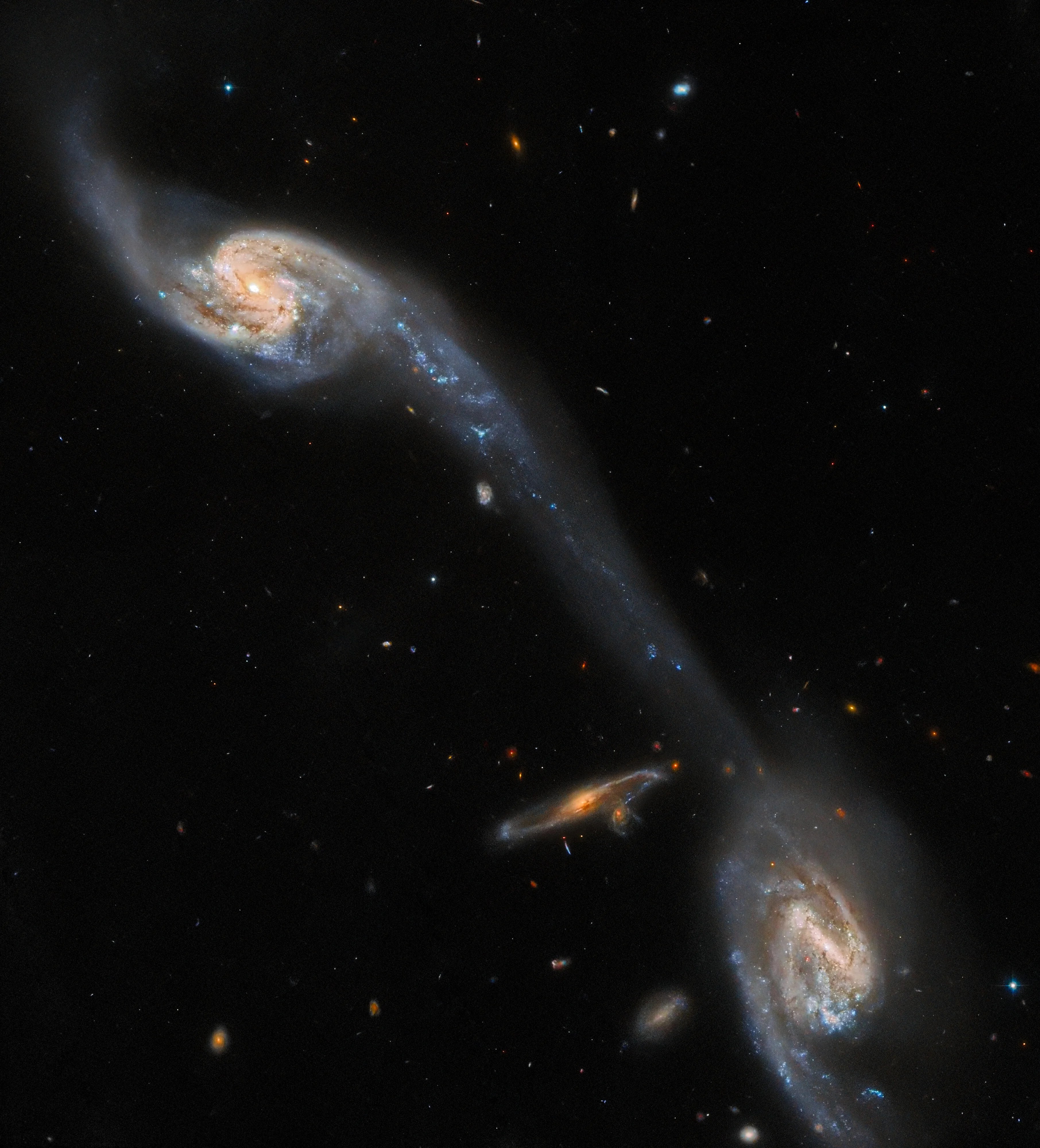2 min read

This image from the NASA/ESA Hubble Space Telescope shows two of the galaxies in the galactic triplet Arp 248 – also known as Wild's Triplet – which lies around 200 million light-years from Earth in the constellation Virgo. The two large spiral galaxies visible in this image – which flank a smaller, unrelated background spiral galaxy – appear connected by a luminous bridge. This elongated stream of stars and interstellar dust is known as a tidal tail, and it formed by the mutual gravitational attraction of the two foreground galaxies.
This observation comes from a project which delves into two galleries of weird and wonderful galaxies: A Catalogue of Southern Peculiar Galaxies and Associations, compiled by astronomers Halton Arp and Barry Madore, and the Atlas of Peculiar Galaxies, compiled by Halton Arp. Each collection contains a menagerie of spectacularly peculiar galaxies, including interacting galaxies such as Arp 248, as well as one- or three-armed spiral galaxies, galaxies with shell-like structures, and a variety of other space oddities.
Hubble’s Advanced Camera for Surveys scoured this assortment of eccentric galaxies in search of promising candidates for future observations with the NASA/ESA/CSA James Webb Space Telescope, the Atacama Large Millimeter/submillimeter Array, and Hubble itself. With the wealth of astronomical objects to study in the night sky, projects such as this, which guide future observations, are a valuable investment of observing time.
Text credit: European Space Agency (ESA)
Media Contact:
Claire Andreoli
NASA's Goddard Space Flight Center, Greenbelt, MD
301-286-1940







